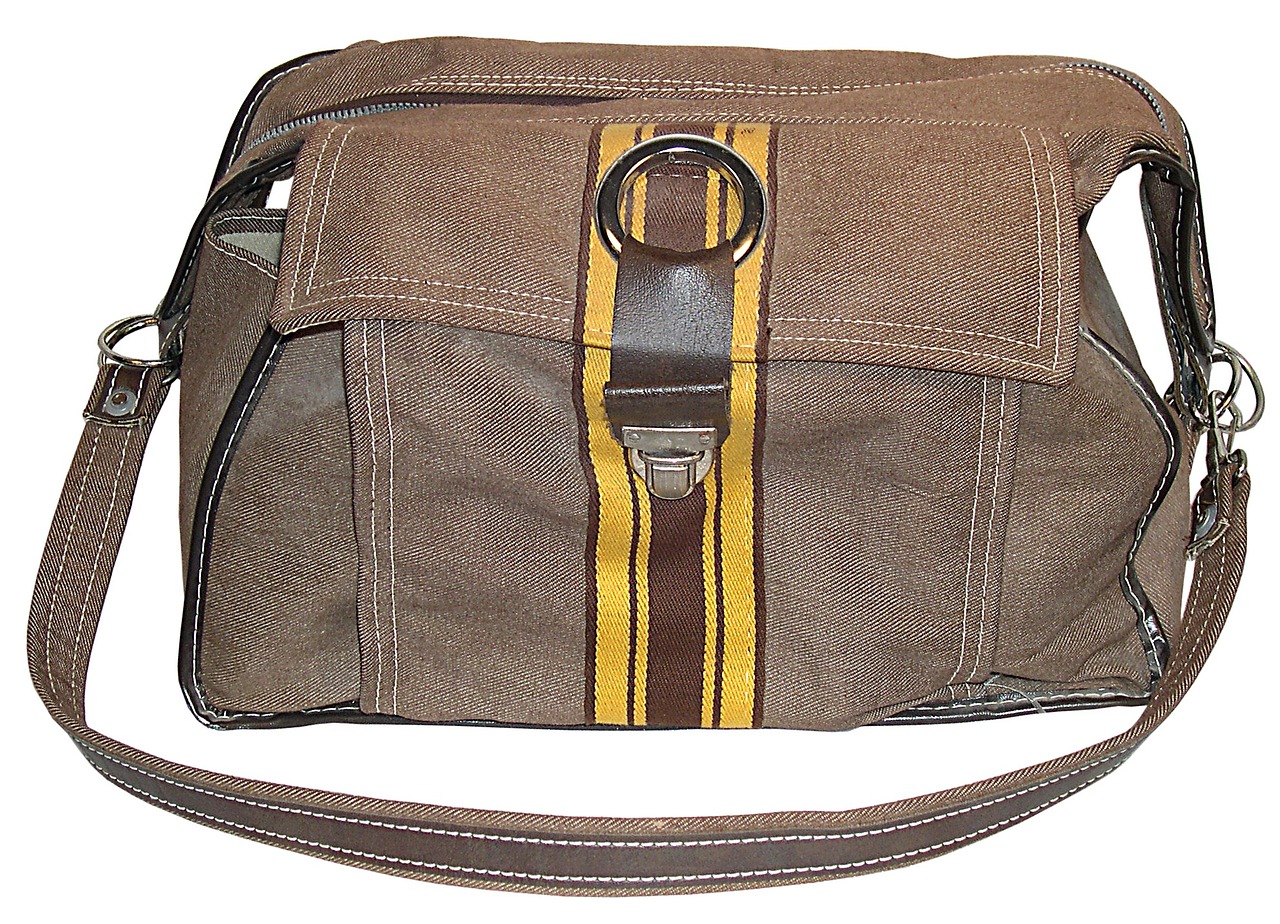When it comes to timeless fashion accessories, leather bags stand out as a symbol of sophistication and versatility. Crafted from high-quality materials, leather bags have evolved over centuries, embracing various styles that cater to both functional and aesthetic needs. The types of leather used, such as full-grain, top-grain, and genuine leather, play a crucial role in determining the bag’s quality and appearance. From vintage designs that evoke a sense of nostalgia to modern, minimalist styles with innovative features, leather bags have gracefully adapted to changing trends. This evolution is not just about fashion but also reflects the enduring popularity and durability of leather as a material. Understanding the nuances, from demystifying leather grades to exploring sustainable options, empowers consumers to make informed choices. Beyond their stylish exterior, leather bags are practical companions with ample storage, comfortable carrying options, and durable hardware. Proper maintenance, including cleaning routines and storage practices, ensures these accessories remain investment pieces that stand the test of time. As the fashion industry embraces sustainability, eco-friendly leather options gain traction, offering a guilt-free choice for conscientious consumers. Whether gracing the runways or accompanying individuals in their everyday lives, leather bags continue to be an unmatched symbol of elegance and functionality.
Understanding the Rich Heritage of Bags in Leather
Leather bags boast a heritage steeped in tradition and craftsmanship. From the early days when our ancestors fashioned crude pouches from animal hides to the modern, sleek designs gracing runways and streets, leather bags have evolved into timeless fashion accessories. Their rich history is not merely about utility but a testament to the enduring allure of this versatile material.
The Origins of Leather Bags
Leather bags find their roots in ancient civilizations where nomads and traders fashioned rudimentary carryalls from animal hides. These early designs were more about functionality than fashion, serving a practical purpose in transporting goods.
Evolution into Fashion Staples
Over the centuries, leather bags transformed from utilitarian items to coveted fashion statements. The Renaissance era saw the emergence of luxurious leather bags adorned with intricate details. In the 20th century, iconic designers elevated leather bags to high fashion, solidifying their status as a symbol of sophistication.
Enduring Popularity
The enduring popularity of leather bags can be attributed to their timeless appeal. They seamlessly transition from one era to another, adapting to changing fashion trends while retaining their classic charm. The versatility of leather ensures its continued relevance in the dynamic world of fashion.
Types of Leather Used in Crafting Quality Bags
Not all leathers are created equal, and understanding the various types is crucial in selecting a quality leather bag. Each type offers unique characteristics, influencing the bag’s appearance, durability, and price. Delving into the distinctions among leathers provides valuable insights for making an informed choice.
Full-Grain Leather
Considered the highest quality, full-grain leather retains the complete grain layer, showcasing natural markings and textures. Its durability is unmatched, and with time, it develops a distinct patina that enhances its appeal.
Top-Grain Leather
Top-grain leather is sanded or buffed to remove imperfections, resulting in a smooth surface. While it may lack the natural look of full-grain leather, it offers a good balance between durability and a refined appearance.
Genuine Leather
Contrary to its name, genuine leather is not the highest quality. It refers to any real leather but can vary significantly in quality. Consumers should be cautious, as some products labeled “genuine leather” may not meet expectations.
A Journey Through Time: Evolution of Leather Bag Styles
The evolution of leather bag styles mirrors the shifting preferences and lifestyles of different eras. From utilitarian pouches to fashionable accessories, the journey through time showcases the adaptability of leather bags in meeting both practical and aesthetic needs.
Vintage Revival
The resurgence of vintage styles has brought back iconic leather bag designs from the mid-20th century. Vintage-inspired leather bags evoke a sense of nostalgia while complementing modern fashion sensibilities.
Minimalist Modernism
Contemporary leather bag styles often embrace minimalist designs, emphasizing clean lines and functionality. Modern consumers appreciate the fusion of classic craftsmanship with sleek, minimalist aesthetics.
Technological Integration
As technology advances, leather bags incorporate innovative features such as built-in charging ports, anti-theft mechanisms, and smart compartments, catering to the tech-savvy and on-the-go lifestyles of today.
Demystifying Leather Grades: Choosing the Right Quality
Understanding leather grades is essential for making an informed purchase. While terms like “full-grain” and “genuine leather” are commonly used, knowing the distinctions helps consumers navigate the market and select a leather bag that aligns with their preferences and expectations.
Full-Grain vs. Top-Grain
Differentiating between full-grain and top-grain leather involves examining the surface treatment. Full-grain retains the outer layer, providing a more natural appearance, while top-grain undergoes additional processing for a smoother finish.
Genuine Leather Realities
Contrary to popular belief, “genuine leather” doesn’t guarantee the highest quality. It’s crucial to delve deeper into the specific type of genuine leather used in a bag to assess its durability and overall quality.
Bonded Leather Warning
Consumers should exercise caution when encountering the term “bonded leather,” as it consists of leather scraps fused with synthetic materials. While more affordable, bonded leather lacks the durability and longevity of higher-quality options.
Functionality and Fashion: Features to Look for in Leather Bags
Balancing functionality and fashion is a hallmark of well-designed leather bags. Beyond aesthetic appeal, these accessories should cater to the practical needs of the user. Exploring key features ensures that a leather bag not only looks good but also serves its intended purpose.
Ample Storage and Compartments
Practicality is enhanced by thoughtful compartmentalization. Look for leather bags with well-designed pockets and sections, catering to the organized storage of essentials like laptops, documents, and personal items.
Comfortable Carrying Options
Consider the bag’s carrying options, such as sturdy handles and adjustable straps. A well-designed leather bag should offer comfort during extended use, whether carried by hand, over the shoulder, or across the body.
Quality Hardware and Zippers
Examining the quality of hardware, zippers, and closures is crucial for assessing a leather bag’s longevity. Durable components not only enhance functionality but also contribute to the overall aesthetic appeal.
Caring for Your Investment: Leather Bag Maintenance Tips
Proper maintenance is key to preserving the beauty and longevity of leather bags. Understanding the material and following recommended care tips can significantly extend the life of these accessories, ensuring they remain timeless and well-preserved.
Cleaning and Conditioning Routine
Regularly clean leather bags with a soft, damp cloth to remove surface dirt. Applying a leather conditioner helps nourish the material, preventing it from drying out and developing cracks.
Storage Best Practices
When not in use, store leather bags in a cool, dry place to prevent mold and mildew. Stuffing the bag with tissue or bubble wrap helps maintain its shape, and avoiding direct sunlight prevents fading.
Addressing Stains and Spills
In the unfortunate event of stains or spills, act promptly. Use a mild soap or leather cleaner and a soft cloth to gently clean the affected area. Avoid harsh chemicals that can damage the leather.
Exploring Sustainable Options: Eco-Friendly Leather Bags
As environmental consciousness grows, so does the demand for sustainable and eco-friendly products. Leather bags made from responsibly sourced materials and eco-friendly practices appeal to consumers seeking stylish accessories with a reduced environmental impact.
Ethical Leather Sourcing
Choosing leather bags crafted from ethically sourced materials ensures minimal environmental impact. Some brands prioritize transparency in their supply chains, using leather from responsibly managed farms or recycled sources.
Vegetable-Tanned Leather
Vegetable-tanned leather is an eco-friendly alternative to traditional tanning methods that use harmful chemicals. This process utilizes natural tannins found in plant matter, resulting in a more environmentally sustainable product.
Upcycled Leather Fashion
Embracing the upcycling trend, some designers repurpose discarded leather materials to create unique and sustainable bags. Upcycled leather not only reduces waste but also adds a distinctive character to each piece.
From Runways to Streets: Leather Bag Trends Unveiled
Fashion trends in the world of leather bags are ever-evolving, influenced by the runways and adopted by style-conscious individuals worldwide. Staying abreast of the latest trends allows fashion enthusiasts to make informed choices and showcase their individuality.
Bold Colors and Prints
Recent trends have seen a departure from traditional neutrals, with bold colors and prints making a statement. Vibrant hues and eye-catching patterns add a playful and contemporary touch to leather bag designs.
Mini Bags Making a Maxi Impact
Miniature-sized leather bags have gained popularity, offering a chic and practical accessory for those who prioritize style on the go. Despite their smaller stature, these bags often feature intricate details and craftsmanship.
Sustainable Fashion in Focus
As sustainability becomes a focal point in the fashion industry, leather bags made from eco-friendly materials and ethical practices continue to gain traction. Consumers are increasingly drawn to brands aligning with their values.
Behind the Craft: Artisans and the Making of Leather Bags
The creation of a leather bag is a meticulous process that involves skilled artisans and craftsmen. Understanding the craftsmanship behind these accessories adds an appreciation for the artistry and dedication invested in each piece.
Handcrafted Excellence
Artisanal leather bags often undergo a labor-intensive, hands-on process. Skilled craftsmen meticulously cut, stitch, and finish each piece, ensuring attention to detail and a level of precision that mass production cannot replicate.
Personalized Touches
Many artisanal leather bags offer the option for personalization. Whether it’s embossed initials or custom hardware, these personalized touches not only add uniqueness but also reflect the craftsmanship’s dedication to individuality.
Supporting Local Artisans
Choosing artisan-crafted leather bags often means supporting local communities and preserving traditional craftsmanship. Consumers can take pride in knowing their purchase contributes to the livelihoods of skilled artisans.
The Unmatched Versatility of Leather Bags in Everyday Life
Beyond their aesthetic appeal, leather bags seamlessly integrate into various aspects of everyday life. Their versatility makes them suitable for diverse occasions, from professional settings to casual outings, enhancing the overall functionality and style of the wearer.
Professional Elegance
Leather bags exude a sense of professionalism, making them a staple for business settings. Whether it’s a classic briefcase or a sophisticated laptop bag, leather accessories complement formal attire with timeless elegance.
Casual Chic for Everyday Errands
For everyday use, leather bags in more casual designs provide a touch of sophistication to casual outfits. Tote bags, crossbody styles, and backpacks crafted from quality leather effortlessly elevate everyday ensembles.
Transitioning from Day to Night
The versatility of leather bags extends to evening events. Elegant clutches or small leather shoulder bags seamlessly transition from day to night, ensuring a polished look for various occasions.
FAQs: Navigating the World of Leather Bags
Q1: Are all leather bags made from animal hides?
A1: Yes, most leather bags are crafted from animal hides. However, there are alternative materials like synthetic leather for those who prefer cruelty-free options.
Q2: How can I differentiate between genuine leather and faux leather?
A2: Genuine leather has a distinct smell and unique texture. Faux leather often feels smoother and lacks the natural variations present in genuine leather.
Q3: What’s the best way to clean and maintain a leather bag?
A3: Use a damp cloth for surface cleaning and a leather conditioner for maintenance. Avoid exposing the bag to direct sunlight and store it in a cool, dry place.
Q4: Is there a specific leather type best suited for sustainable practices?
A4: Vegetable-tanned leather is considered more eco-friendly due to its natural tanning process. Additionally, choosing brands committed to ethical sourcing contributes to sustainability.
In conclusion, the world of leather bags is a captivating journey through history, craftsmanship, and style. From the diverse types of leather to the evolving trends and sustainable options, understanding the intricacies empowers consumers to make informed choices. Whether for professional use, casual outings, or special occasions, the unmatched versatility of leather bags ensures they remain an enduring and cherished accessory in the world of fashion.







